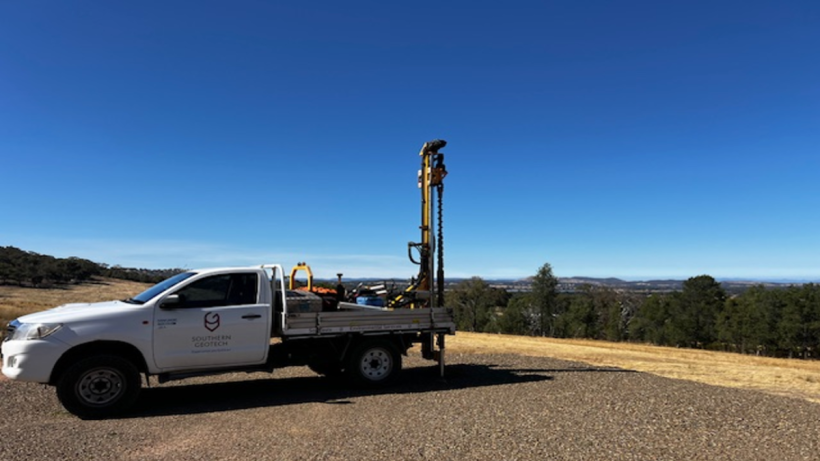Anyone planning a new build would already have started the process of scheduling the necessary soil tests and assessments needed to authorise the required building permits. You will more than likely have commissioned a geotechnical engineer who will perform the necessary investigations to assess the quality of the ground you want to build on.
Opting for the soil testing Melbourne property owners rely on for all their ground assessments is the quickest way to establish how safe your foundations will be. That said, you may be wondering how exactly these tests are done. Keep reading as we explore the different types of soil testing methods your engineers may use.
What are Soil Tests?
Soil tests are also commonly referred to as site classifications and are usually conducted to establish the types of soil on your proposed building site. These types of assessments allow engineers to recommend the most appropriate foundations as well as highlight specific techniques to ensure that the soil remains stable enough to bear the weight of the planned structure.
These tests involve collecting samples and having them analysed in a laboratory. A few key aspects that will be assessed include the following:
- Soil density (to establish load-bearing capacity)
- Moisture content (to assess how well the soil will absorb water to prevent flooding)
- Composition (sand, clay, or rock)
Soil Test Methods Often Used
Many people are unaware of how crucial soil tests are to a proposed build. Engineers rely on these tests and assessments to help your building team create a sturdy and stable foundation that won’t crack after the first seasonal storm. Here’s a list of some of the more common soil testing methods used by geotechnical engineers all across Australia.
1. Standard Penetration Test (SPT)
One of the more commonly applied soil testing methods used in Australia is the Standard Penetration Test, or SPT. This test typically involves driving a split-barrel sampler into the soil. A standard hammer weight and drop height are used to create a series of blows that penetrate a specific depth.
The primary goal is to establish the strength and density of the soil on the building site. For the most part, STP tests are used to evaluate weaker, cohesionless soils. Sands and gravels are common examples of this.
2. Triaxial Compression Test
Your geotechnical team will have to assess how the soil on your proposed build holds up under loads of different weights. This will tell the engineer whether or not a strong foundation can be built.
By using a cylindrical soil sample, axial stress is applied to establish the deformation properties of the soil. This test also helps the team to assess how effective the drainage will be. This is crucial to know for builds in high rainfall areas.
3. Permeability Tests
A permeability test is another test that’s done to determine how effective drainage and water flow will be. This will give the engineer an idea of how stable the foundation will be and whether or not reinforcements may be required to support the foundation.
The results of this test may be used to select the best type of drainage systems to prevent flooding and moisture build-up in the foundation. Doing this can save the property owner a considerable amount of money in the long run.
4. Atterberg Limits Test
If your build will also require a pavement area, then your engineer will perform an Atterberg Limits test. Typically, this test helps to assess the moisture content and plasticity of soil. Three values, namely, the liquid limit, plastic limit, and shrinkage limit, are used to establish how well the soil will behave under moisture conditions.
This is essential for paving areas, sidewalks and foundations that could crack down the line if they are exposed to excessive moisture that won’t drain. The results of this test will also help your engineer to make the necessary recommendations for specific building techniques.
5. California Bearing Ratio (CBR) Test
Your engineer will not only test the soil under your build for load capacity but will also test any proposed spaces where you may want to build roads. In this instance, the California Bearing Ratio test is done to measure moisture and density conditions.
Here, the goal is to find soil with higher CBR values. These indicate stronger soils which are better suited to supporting heavy loads, such as those on streets and roads. This type of test is also helpful in establishing the potential for soil to hold multiple structures, especially during high rainfall periods.
Final Thoughts
Geotechnical assessments and investigations are ineffective without the necessary soil testing. Each of the methods discussed has a specific intention and purpose and assesses a different aspect of the soil’s characteristics. This, in turn, provides crucial data that will then be used to create a safe and effective foundation.
Your engineer will recommend the test best suited to your site conditions and project requirements. Speak to your local geotechnical team to get the ball rolling on your soil test process.
Laila Azzahra is a professional writer and blogger that loves to write about technology, business, entertainment, science, and health.
